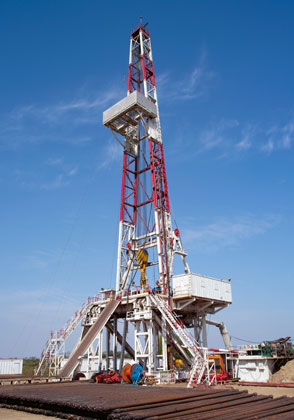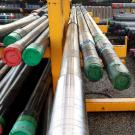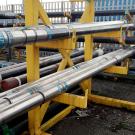DST Sampling

High quality fluid samples provide data, vital to economic and technical evaluation of the reservoir. For that the primary objective of well tests is taking representative PVT samples. Even though DST samplers are capable of capturing downhole samples and recover them within the DST string this procedure has limitations and is considered to be “quick & dirty” sampling.
On the other hand, there are several situations where some operators are reluctant to run wireline bottomhole samplers. These include:
- in HP / HT wells for safety to avoid a high pressure wireline rig up
- in heavy oil wells because of problems in getting tools downhole through high viscosity fluids
- in high H2S wells for safety reasons to avoid release of gas during wireline rig up
- in deep water where moving off location with wire in the hole is considered as high risk
- company policy which dictates wireline is to be avoided
- where there is a risk that the well is not properly conditioned for sampling (absence of well testing equipment)
To facilitate PVT quality sampling for the above applications a new range of DST sample carriers have been developed. These carriers use the proven technology of the LEUTERT PDS and OPS samplers. Each carrier is equipped with a wireless trigger and may be run as a part of the DST string. The trigger command message is conveyed by a telemetry system. Thus multiple tools can be run at the same time, to allow samples to be taken during testing of each zone.
The sample carrier can be set in hanging subs or a nipple, often allowing the samplers to be positioned below the packer and closer to the formation. The carrier may also be positioned in a wireline string and triggered individually once the liquid contact has been established.
Even DST sampling is doable or the only alternative, PVT slickline sampling remains the better choice. One important point is that cleanup and well conditioning objectives should remove all fluids and filtrate introduced into the well and the wellbore region during drilling and/or completion. Correct well conditioning will also remove any altered reservoir fluid the wellbore region. Cleanup and conditioning the well before sampling is therefore essential, but very often incomplete during DST constraints. DST samples are more likely to be contaminated in comparison to slickline obtained bottom hole samples. As a result DST type samples lack the PVT quality of downhole samples. In fact, the majority of PVT Laboratory experts consider One Phase Bottom Hole Samples collected via slickline/wireline the only “true method’ of reservoir fluid sampling.
Another significant weakness of DST samplers is the uncertainty whether a “representative” fluid sample has been recovered until after the well has been killed and the DST string is being pulled out of hole. By that time it is obviously too late to rectify the situation in case the samples are found to be unrepresentative. For most operations this risk is unacceptable.
As long as it is safe and practical to run slick line, most operators prefer to recover samples on Positive Displacement or One Phase™ wireline downhole samplers and validate the samples on surface before abandoning the zone.
Sample Carrier Trigger
| Temperature rating: | 347 °F (175 °C) |
LOW PRESSURE SYSTEM
| Max. OD: | 5.390" (136.906 mm) |
| Min. ID: | 2.25" (57.15 mm) |
| Length: | 19 ft (5.8 m) |
| Burst: | 10,140 psi (699 bar) |
| Collapse: | 10,490 psi (723 bar) |
| Tensile: | 304,000 lbs (138 t) |
| Max. test pressure: | 10,000 psi (690 bar) |
| Top connection: | 3 1/2 Hydril PH-6 Box |
| Bottom connection: | 3 1/2 Hydril PH-6 Pin |
HIGH PRESSURE SYSTEM
| Max. OD: | 5.390" (136.906 mm) |
| Min. ID: | 2.25" (57.15 mm) |
| Length: | 19 ft (5.8 m) |
| Burst: | 17,740 psi (1,223 bar) |
| Collapse: | 16,080 psi (1,108 bar) |
|
Tensile: |
532,000 lbs (241 t) |
| Max. test pressure: | 15,000 psi (1,034 bar) |
| Top connection: | 3 1/2 Hydril PH-6 Box |
| Bottom connection: | 3 1/2 Hydril PH-6 Pin |

